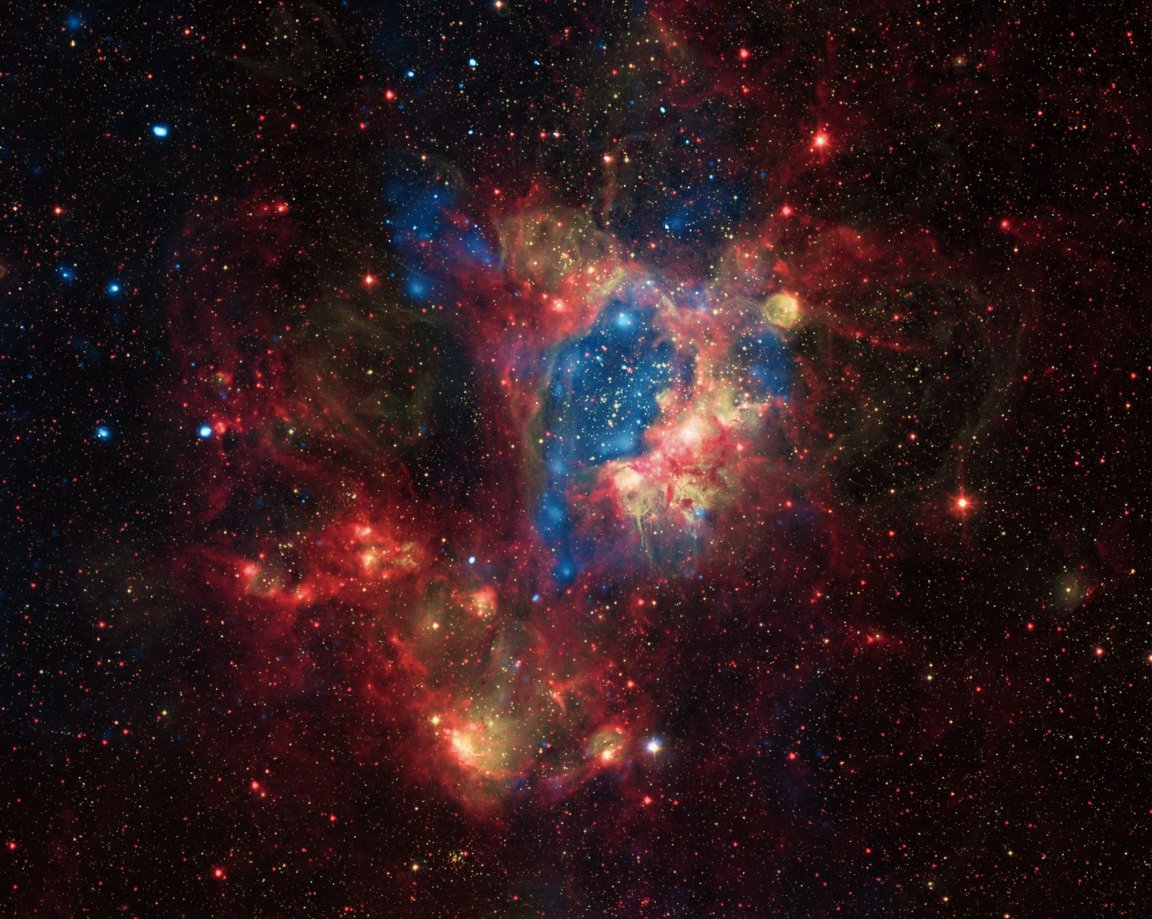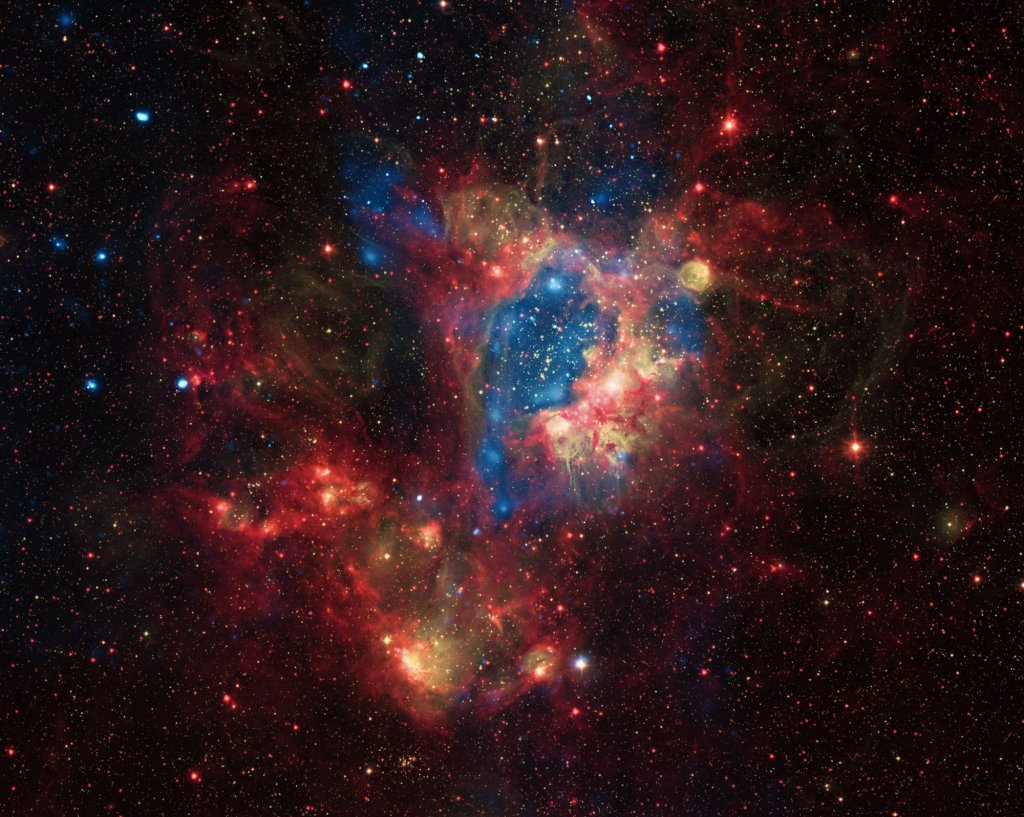

Our galaxy, the Milky Way, has several dwarf galaxies in orbit around it. Among them is the most famous dwarf galaxy; the Large Magellanic Cloud (LMC). This incredible image focuses on one of the largest star forming regions contained within the LMC, called. N44, (It can be found more than 160,000 light-years from Earth in the constellation of Dorado).
Contained within N44 is NGC 1929, an embedded cluster of stars. The stars there are massive, metal-poor stars that live fast, burn hot and die a lot sooner than less massive stars like our sun do. As a result, they emit large quantities of intense ultraviolet radiation, which help carve out huge cavities, or “super-bubbles” in gaseous envelopes. (They are responsible for its beautiful appearance)
This image is a composite, which means that various images of the area were taken at different wavelengths and stitched together, allowing us to see the features and activity more clearly. X-ray data taken by Chandra can be seen in blue (depicting the hot regions affected by stellar winds and shock-waves). Infrared data taken by Spitzer can be seen in red. Finally, optical data taken by the 2.2m Max-Planck-ESO telescope can be seen in yellow.
See a larger image here.